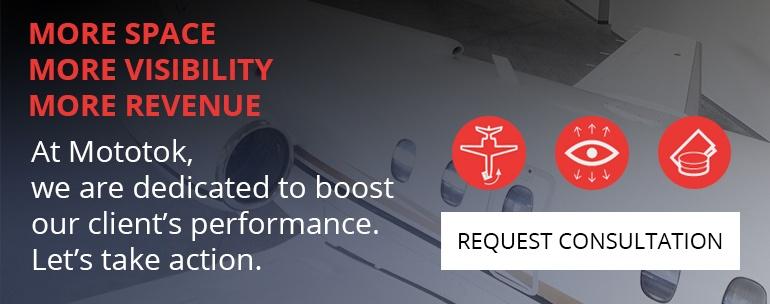Whatever is accurate or inaccurate regarding fuel consumption and carbon footprints, a shift away from fossil fuels towards electrical power generation, whether total electrical power generation or hybrid power, is inevitable. The transition is partially theoretical and partly in action right now. As of right now, electrical alternatives are in commission in the form of ground support equipment. There are a number of concepts right now, but the reality is another matter entirely. But just how close are we, really, to manned electric flight? And what are the other avenues in aviation, if any, where electrical power is being successfully implemented now? Let’s have a look.
The drawing board: electrically powered manned aircraft
The concept of an electric-propulsion aircraft is not new; it is clean, quiet, and efficient, and electric motors produce fantastic torque for their weight, and have instant and perfectly precise throttle response.
But, as with all things, there are always trade-offs. To produce large amounts of clean, quiet energy requires very large amounts of electrical power which also requires a significant store of battery cells for the electrical charge. An electrically powered vehicle must have batteries whether it is solely battery powered, or a hybrid design which uses an internal combustion engine to drive a generator which supplies energy.
There are advantages to each design. Obviously, a vehicle using only batteries for power is going to be simpler and lighter, but considerably restricted in range.
A hybrid aerospace vehicle is generally going to use a turbine engine for electrical power generation, as opposed to a much heavier reciprocating engine. The theory being that a very light electrical engine can produce the same thrust as a much heavier jet turbine engine, and a significantly smaller turbine engine can be used to generate electrical power for the electric engine that to generate comparable thrust as the electrical engine. Airbus is presently exploring this type of hybrid fixed-wing aircraft with their E-Fan X, a regional airliner concept which uses four engines, three of which are traditional turbofan engines and the fourth is an electric motor which is powered through large battery cells which are charged via turbine generator. The design boasts a 30% fuel reduction over comparable designs.
Is it worth the high design cost?
In the fixed-wing market segment, we have to ask and answer a very important question: is it really worth it? At the risk of sounding somewhat like a heretic, we have to talk real numbers here. While the following table is based on estimates, it illustrates a strong point: over the course of the past three decades, jet aircraft efficiency has improved dramatically.
|
Year |
Aircraft |
Passengers |
Fuel burn |
|
1992 |
727 |
150 |
11,100 lbs./hr. |
|
1997 |
MD80 |
139 |
7,400 |
|
2010 |
737 |
165 |
5,400 |
|
2018 |
737 (newer) |
170 |
4,400 |
We are talking a total reduction per flight hour of over 60% in the course of 26 years! That is huge! But if you calculate lbs/hr per passenger, the fuel reduction is now almost 65%! So in less than three decades, the per passenger fuel economy has improved by almost two-thirds. The is truly marvelous engineering.
The question we have to ask now is simple: with all of the added weight of battery storage cells for electric motors, what will the passenger count be on a comparably-sized airliner? If the fuel reduction is 30% but we have a 40% reduction in seats, it is a net loss. Even if it is a wash in terms of seats, how long will it take to cover the costs of R&D and manufacturing of hybrid airliners, versus what we can predictably expect that jets will continue to become even more efficient in the next decades? We just have to be realistic about this delicate balance.
EVTOL
Only time will tell what the future holds for airliners implementing electrical power on a broad scope. Perhaps a more viable use of electrical power for manned flight exists in the electrical vertical takeoff and landing (EVTOL) market.
Transportation giant Uber is weighing heavily into the fray for personal air taxi services and has poised itself to be the frontrunner in the movement. The idea of a personal aerial commuter is definitely not new; it is the stuff of 1950’s science fiction. For a number of years, even decades, attempts have been made at personal flying cars, car/airplane hybrids, and even personal micro-helicopters. These attempts have all flatly failed; cars make terrible airplanes because they are heavy, so if you make it light enough to fly, it won’t be safe on public roads. Helicopters are hard to fly and have some of the highest accident rates among general aviation, particularly small, homebuilt helos. Fixed wing flying cars, were they even feasible mechanically, still have to land at an airport and commute on the road.
EVTOL aircraft may just fill a void in short distance aerial commuting. Uber Air is exploring options from several prominent manufacturers including Bell and Embraer to create the most viable solution for aerial commuting. Their promotional materials boasts enormous time savings for common commutes. For example, they show a 15 minute flight between San Jose and San Francisco, where the ground commute ranges between 1:40 and over 2:10!
Heavy Lift and Unimproved Operations
Perhaps the most interesting and inspiring example of electric aircraft comes from Canada, Solarship, Inc. This company has a revolutionary vision: taking badly needed material into remote regions of Africa. Solarship designs hybrid aircraft (blimps with propulsion and a fuselage similar to fixed-wing aircraft), and aerostats (very large balloons with directional controls and forward propulsion) capable of extremely heavy lift, some over 110,000 lbs.
These aircraft require practically no infrastructure support and can operate out of almost anywhere for fractions of the cost of comparable traditional aircraft. Comparable is not really totally accurate in the sense that ‘comparable’ aircraft are either fixed-wing or rotary-winged and use internal combustion engines.
An obvious drawback of the design is the lack of speed. The other major detractor is the wind restriction. But those seem easily compensated by the amazing capabilities; these aircraft can drop their cargo with exacting precision, an amazing feat when you consider their largest aerostat has a payload of 55 tons! Imagine the possibilities: shipping a pre-manufactured mobile bridge across a nation by air and setting it down precisely into position with ever even needing a crane. And the aerostat designs are infinitely scalable, as well as offering the ability to coordinate lift. Imagine having four aerostats lifting in unison: they would be able to lift 220 tons! And on, and on it goes.
Ground Support
The most accessible means of implementing electrical power into aviation is on the ground side of airport operations. While electric support vehicles are not all that new, the technology being used now has vastly expanded their capabilities and usability. The best example are the all-electric tugs from Mototok.
These tugs are not only environmentally sound, but are intuitively designed to reduce the workload on ground support personnel. Remote control aircraft tugs free up personnel who can otherwise be performing more technical work, or other tasks which cannot be further reduced in personnel.
Electric GSE requires no warm-up period, which is wonderful in areas where warm-ups are a necessary part of operations. The simply must be turned on and operated. They are not complicated to operate, and the energy required to maintain a charge is vastly under the energy necessary to run a diesel engine. Now, there are some GSE items which will always be diesel powered, but more and more are able to operate on electrical power.
Power pits are replacing expensive, inefficient diesel generators (which are also unbelievably loud), providing instant, reliable, and silent power to aircraft. Why bring up noise? Because beyond hearing loss, noise is a serious safety concern. Loud equipment creates confusion in communication, and clear communication is one of the most paramount safety functions on the airport. Power units are notorious offenders because they operate at a fixed RPM for indefinite periods, drowning out all levels of speech under shouting which is dangerous. When you cannot communicate in anything other a shout, people often stop communicating and assume other will intuitively know what is going on.
Tugs are a similar conundrum. While not the constant source of noise pollution as power units, they are noisy and smelly, and make communications during critical phases of movement much more difficult. A silent electric tug allows communication between towing-team members to be conducted at conversational tones, and warnings are heard and heeded much more effectively.
A ramp with primarily electric GSE is a much quieter place, which also leads to reduced fatigue and improved safety. The noise of occasional jet engines on the ramp is vastly different than the fatigue caused by the chronic noise of diesel GSE droning, and it is not a quiet drone, either. It will be a safer and much more pleasant place. Workers will no longer go home smelling of diesel fumes, with ringing in their ears. It makes a big difference in workplace satisfaction.
Conclusion to electrical power in aviation
This article is difficult to conclude well because it is a veritable rabbit hole of information. Electrical aircraft are coming in many forms, and is going to happen sooner rather than later. Traditional aircraft will still have their place and will be a fixture for decades to come, but electric aircraft will carve a niche in the airspace model. The air taxi concept is probably the one which will gain traction the most quickly and has tremendous appeal in and around congested urban sprawl. Electrically driven airliners will not be 100%-electrically powered for many years to come, if ever, but hybrids are on the near horizon and short-distance commuters look promising. Electric GSE is the most attractive electric addition to the aviation community and it does not need to wait for emerging technology to implement it; it is here now and can be purchased immediately, with immediate, positive, and profitable results.
When it comes to electrical power you want to be ahead of your time? Switch to electric aircraft tugs – we’ll provide to consultation.



Comments